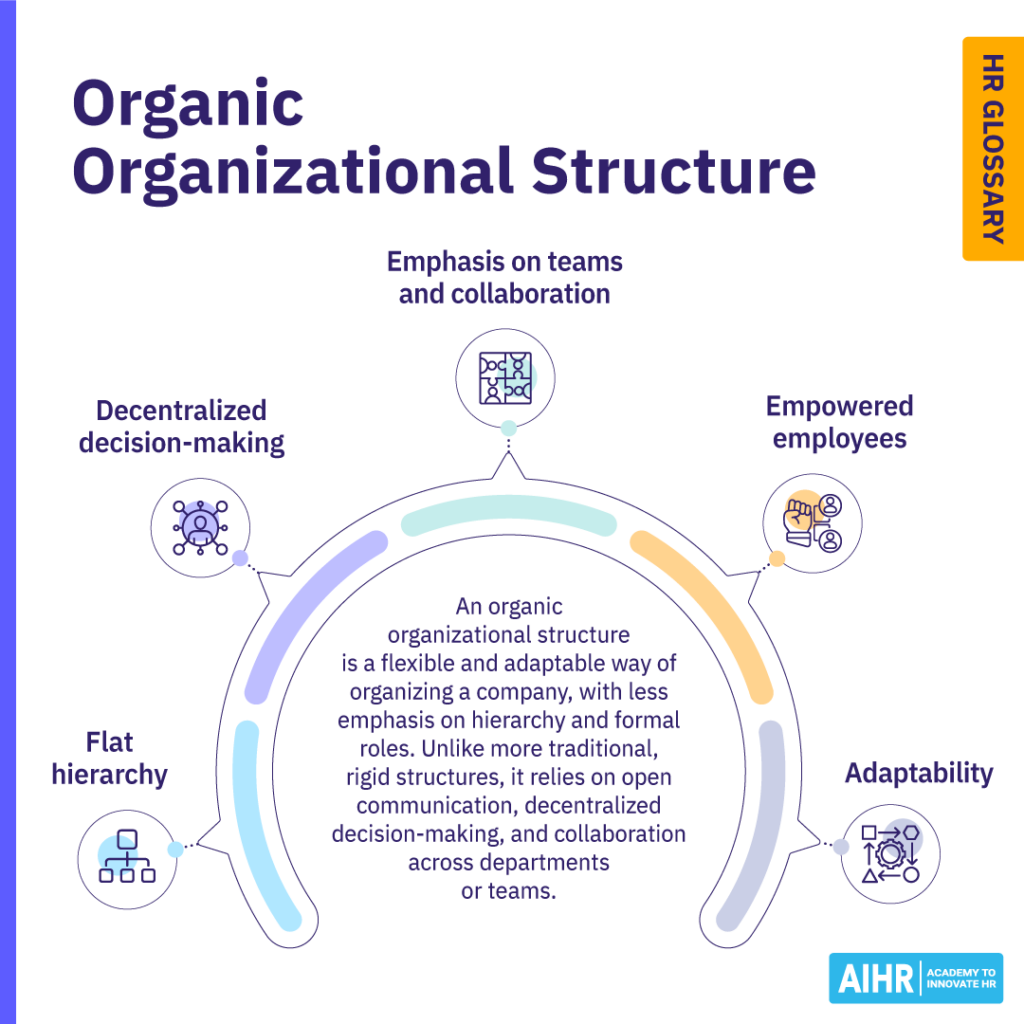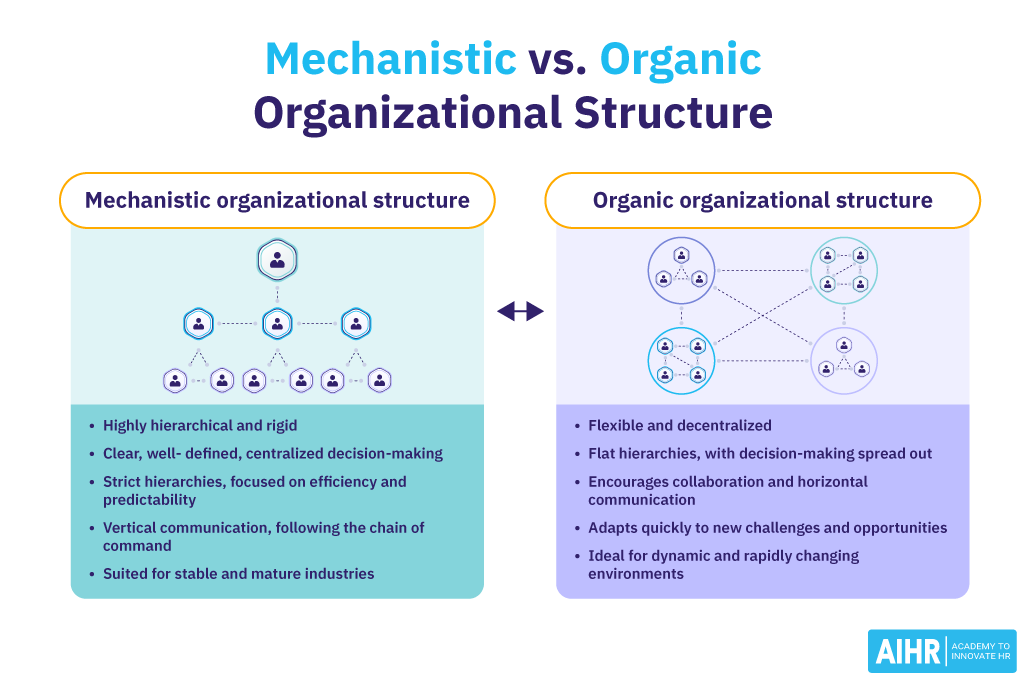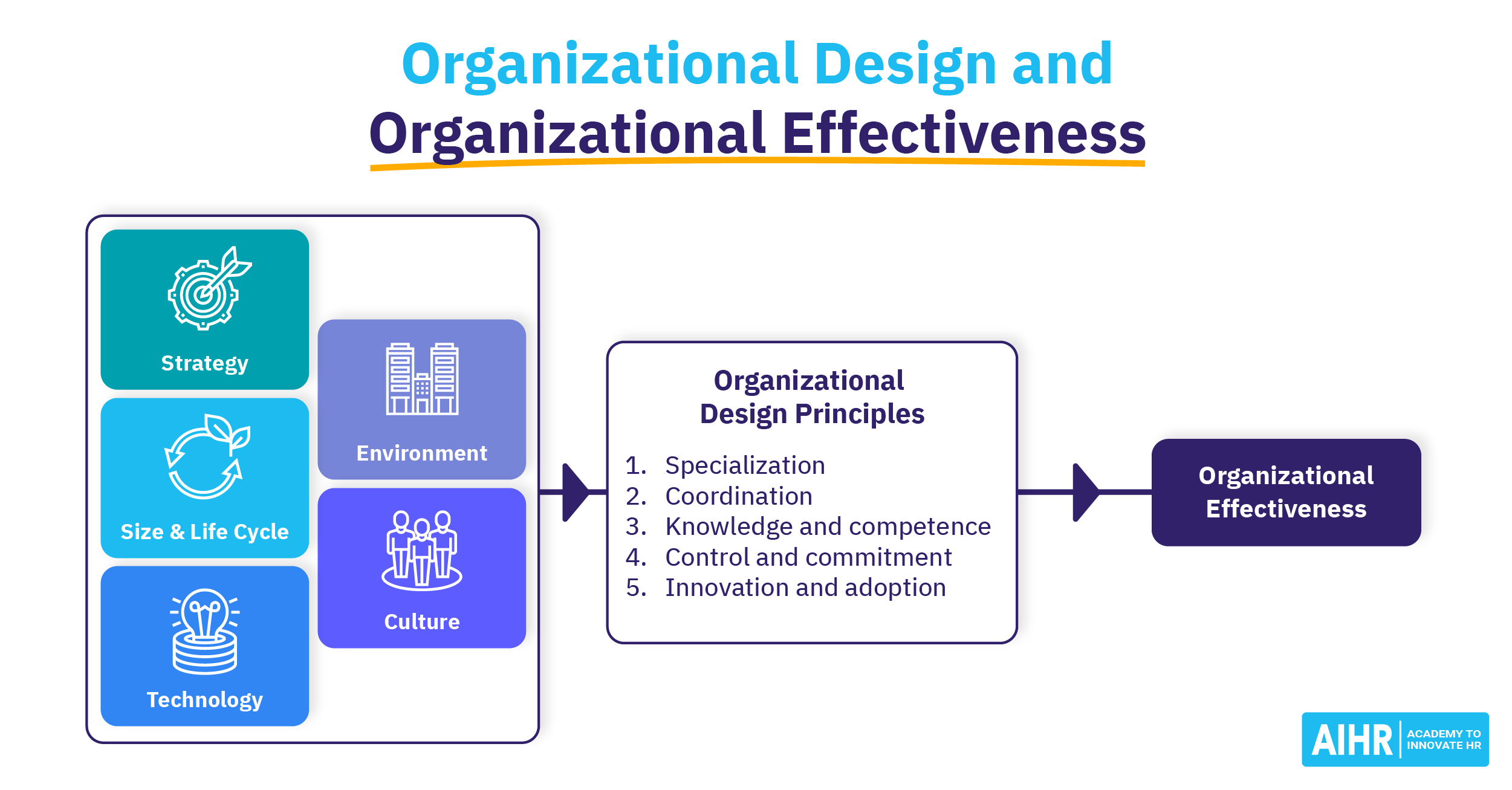Organic Organizational Structure
What is an organic organizational structure?
An organic organizational structure is a flexible and decentralized way of managing a company that favors an adaptive, informal network approach to decision-making.
This structure supports a more fluid decision-making process by empowering employees at all levels and fostering collaboration across teams and departments. It’s especially effective in environments that demand adaptability, open communication, and teamwork.
Companies with an organic structure typically operate with less hierarchy, allowing people to communicate freely and work together more easily. Some examples include:
- Google: Google encourages innovation and cross-functional collaboration, with teams making decisions quickly without a strict chain of command.
- Spotify: Using its “squad” model, Spotify organizes small, autonomous teams that can develop and test features rapidly.
- Zappos: Zappos has implemented “holacracy,” a structure in which traditional job titles and bosses are replaced with a system that gives employees more control over their roles.
- W.L. Gore & Associates: Known for GORE-TEX, this company focuses on flat management, open communication, and shared decision-making.
These companies thrive on adaptability, open communication, and empowering employees to stay innovative and responsive to change.

Key characteristics of an organic organizational structure
Some of the most significant characteristics of an organic organizational structure include:
- Flat hierarchy: Fewer management levels reduce the distance between top leadership and employees, facilitating open communication.
- Decentralized decision-making: Authority and decision-making responsibilities are spread throughout the organization rather than being centralized at the top.
- Emphasis on teams and collaboration: Teams and individuals work across boundaries, strongly emphasizing collaboration and cooperation.
- Adaptability: The structure allows the organization to respond quickly to external changes like market shifts, new technologies, or customer demands.
- Empowered employees: Employees have more control over their work and are encouraged to take initiative, leading to higher engagement and ownership.
Organic organizational structure examples
Companies with an organic organizational structure often operate in rapidly changing industries or those that require a high degree of innovation and creativity. Here are some examples of companies that often adopt an organic organizational structure:
- Startups: In the early stages, startups often use an organic structure to maintain flexibility and adapt quickly to market changes. Teams are small, roles are fluid, and collaboration is key.
- Tech companies: Companies like Google or Spotify have adopted more organic elements in certain areas, encouraging innovation through less hierarchy and more employee autonomy, especially within project teams.
- Creative agencies: Advertising, design, or marketing agencies tend to operate with an organic structure. Teams need to collaborate and innovate quickly, and rigid roles tend to hinder creativity.
- R&D departments: Research and development teams in many industries, including pharmaceuticals or engineering, often function organically to foster creativity and rapid problem-solving.
- Nonprofits or NGOs: Some nonprofits adopt an organic structure to remain flexible in their approach to various social issues, allowing for more collaboration and less rigid decision-making.
In these examples, the organic structure supports innovation, creativity, and the ability to adapt to evolving challenges or markets.
Mechanistic vs. organic organizational structure
Structure
Hierarchical, with clear, rigid departmental boundaries
Flat, with flexible and changing duties
Authority
Centralized decision-making
Decentralized decision-making
Communication
Vertical (top-down)
Lateral and horizontal, encouraging the flow of information
Decision-making
Made by top management, with little input from lower levels
Collaborative, with input from various levels of the organization
Innovation
Less emphasis on innovation, changes are slow and systematic
Encourages innovation and adaptability

Organic organizational structure: Advantages and disadvantages
The advantages
- Flexibility and adaptability: Organic structures allow organizations to quickly adapt to changes in the market, technology, customer preferences, or competitive landscapes.
- Creativity and innovation: The less formalized, more collaborative nature of organic structures fosters an environment that encourages creativity and innovation.
- Improved employee satisfaction: A more relaxed and informal work environment, combined with greater autonomy and opportunity for personal growth, can lead to higher levels of job satisfaction.
- Employee development: The dynamic environment of an organic organization encourages continuous learning and development, as employees are exposed to a wider range of tasks and projects.
The disadvantages
- Lack of clarity: The flexibility of organic structures can lead to a lack of clarity in roles and responsibilities. Employees may be unsure about their duties, decision-making authority, and whom to report to, potentially leading to inefficiencies.
- Difficulty in scaling: This structure might work well in small to medium-sized organizations but can become challenging to maintain as the organization grows due to informal communication and chaotic procedures.
- Potential for conflict: Decentralized decision-making can increase the likelihood of conflict as different individuals or teams might pursue conflicting priorities without a clear hierarchy to resolve disputes, leading to tension and disagreements.
- Risk of overwork: Flexibility and an emphasis on innovation can result in employees taking on too many responsibilities or working longer hours, especially if boundaries are not well-established.
How to implement an organic organizational structure: Tips for HR
Here are several tips for HR professionals on how to effectively implement an organic organizational structure:
- Understand the basics of the organic structure: Grasp the core principles of organic structure, focusing on flexibility, decentralized decision-making, and open communication to guide the transition.
- Evaluate company size and needs: Tailor the organic structure to the company’s specific size and requirements, considering how different departments and teams will interact within this framework.
- Develop a change management strategy: Create a detailed strategy that addresses communication, stakeholder engagement, and timelines, ensuring a structured approach to the transition.
- Train managers to be facilitators: Equip managers with the skills to support and empower their teams, emphasizing facilitation, collaboration, and decentralized decision-making.
- Plan the transition: Outline the steps, milestones, and goals of the transition, including mechanisms to address challenges and ensure alignment across the organization.
- Continuously evaluate and adapt: Set up feedback loops and determine performance metrics to regularly assess the effectiveness of the organic structure, making adjustments as needed.
FAQ
Organic organizations focus on flexibility, adaptability, and collaboration. They prioritize decentralized decision-making, open communication, and cross-functional teams to foster innovation and respond quickly to market changes.
An example of an organization with an organic structure is a tech startup, which is characterized by its flexible structure, decentralized decision-making, and open communication. In this environment, teams form dynamically to tackle projects, fostering innovation and rapid responses to market shifts. This model promotes a culture of collaboration and adaptability, which is essential for thriving in the fast-paced tech industry.
The four types of organizational structures are:
• Functional structure: Groups employees based on their job roles and functions, such as marketing or finance.
• Divisional structure: Divides the organization based on products, geographic locations, or markets.
• Flat structure: A blend of flat and hierarchical structures, typically seen in startups or innovative companies, where there are few or no levels of middle management between staff and executives.
• Matrix structure: Combines elements of both the functional and divisional structures with dual reporting lines, i.e., employees report to both a functional manager and a project or divisional manager.









